Wow what a day! This was a day I had really been looking forward to. Originally we planned to do an amphibious boat ride on the glacier lake. However, they were fully booked so I looked for other options and found kayaking!! Luckily for everyone else they opened up some new bookings and they were able to take the boat, so we all had a good day.
As a glacier lagoon, Jökulsárlón is a lake that is filled with meltwater from an outlet glacier. In this case, it is Breiðamerkurjökull, a tongue of Europe’s largest ice cap, Vatnajökull.
It stands out, however, due to the fact that it also fills with icebergs breaking from the glacier, some of which tower several stories high.
These icebergs, other than their scale, are notable for their colouration. Although they are, as expected, largely white, most are also dyed electric blue in part, with black streaks of ash from eruptions centuries past.
When the icebergs finally make it across the lagoon, they either drift out to sea or wash up on the nearby shore. Because of the way they glisten against the black sands of Breiðamerkursandur, this area has been nicknamed ‘the Diamond Beach’.
We drove past the lagoon and it was fantiastic, couldn’t wait to get back to it. We had a quick look at diamond beach first
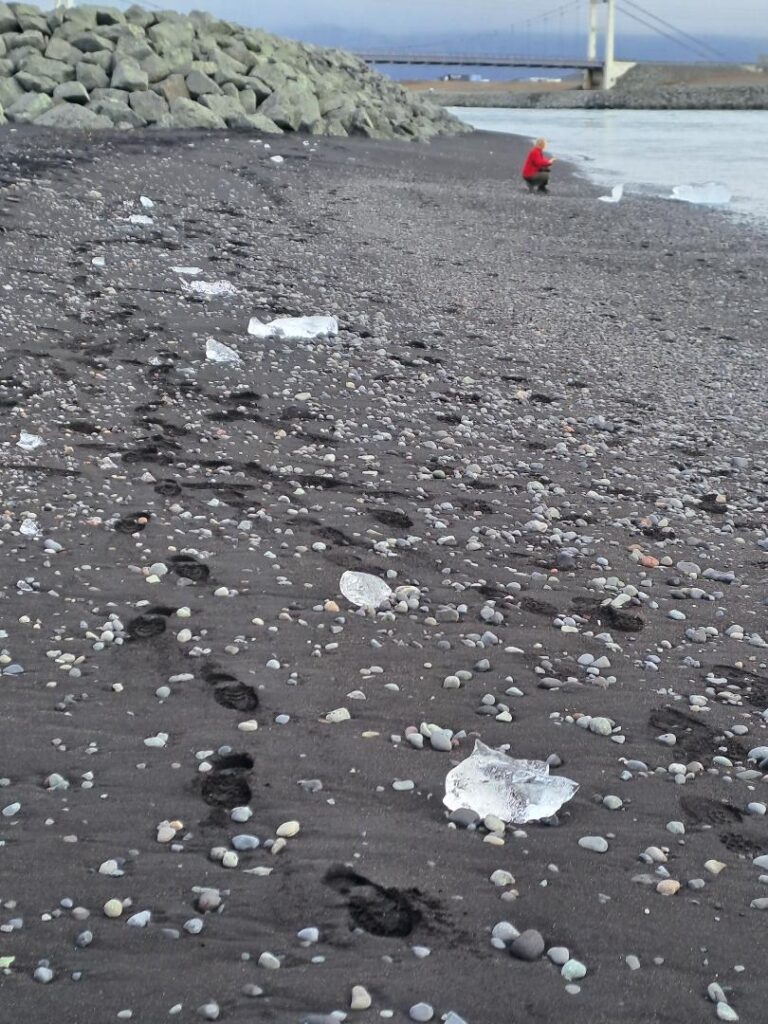
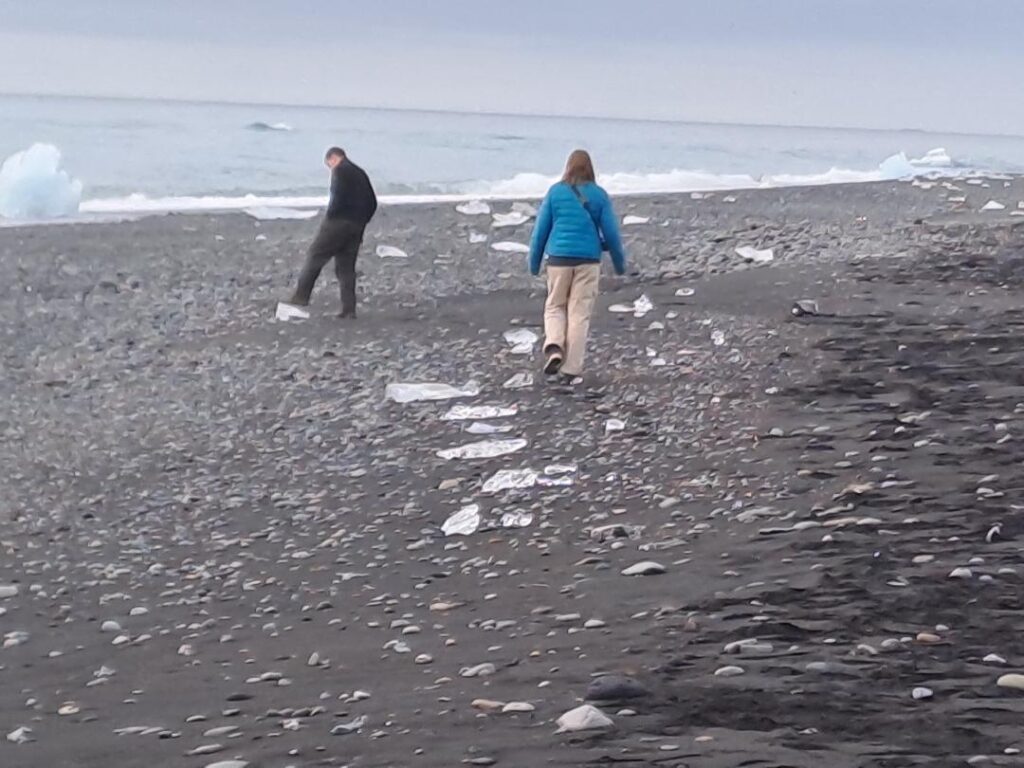

We had a chance to wander around a bit before getting ready for our activities
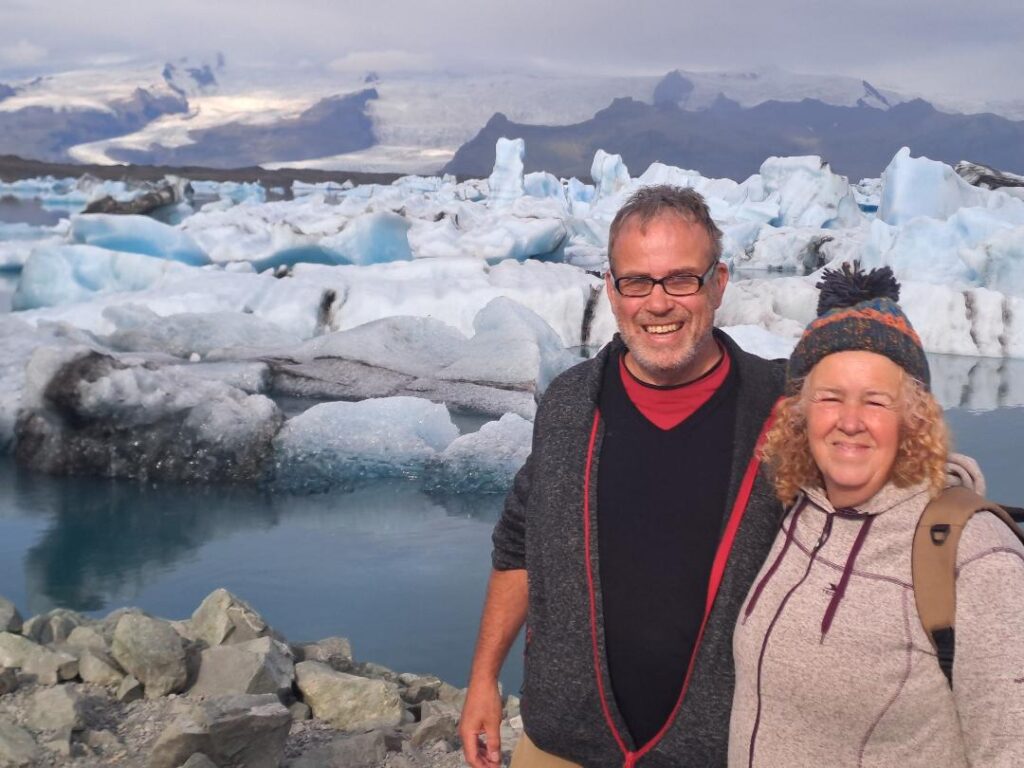
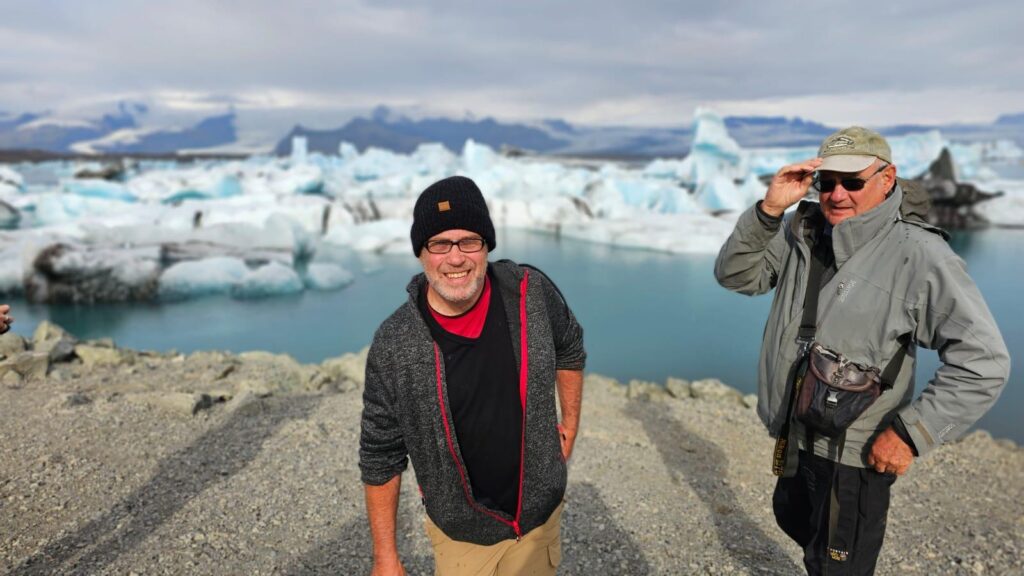
I then had to get togged up in a dry suit (the water is slightly cold if you fall in) and life jacket and do a long walk to the kayaks. Having short legs I had to walk holding my leggings up to make walking easier!
The safety talk was specifice to the dangers if the iceburgs. Not as I was expecting the danger of the 90 percent catching you in the water. The issue is that as the lagoon is part sea water and part freshwater the iceburgs melt faster underneath. This means that periodically they turn over and this presents the danger.
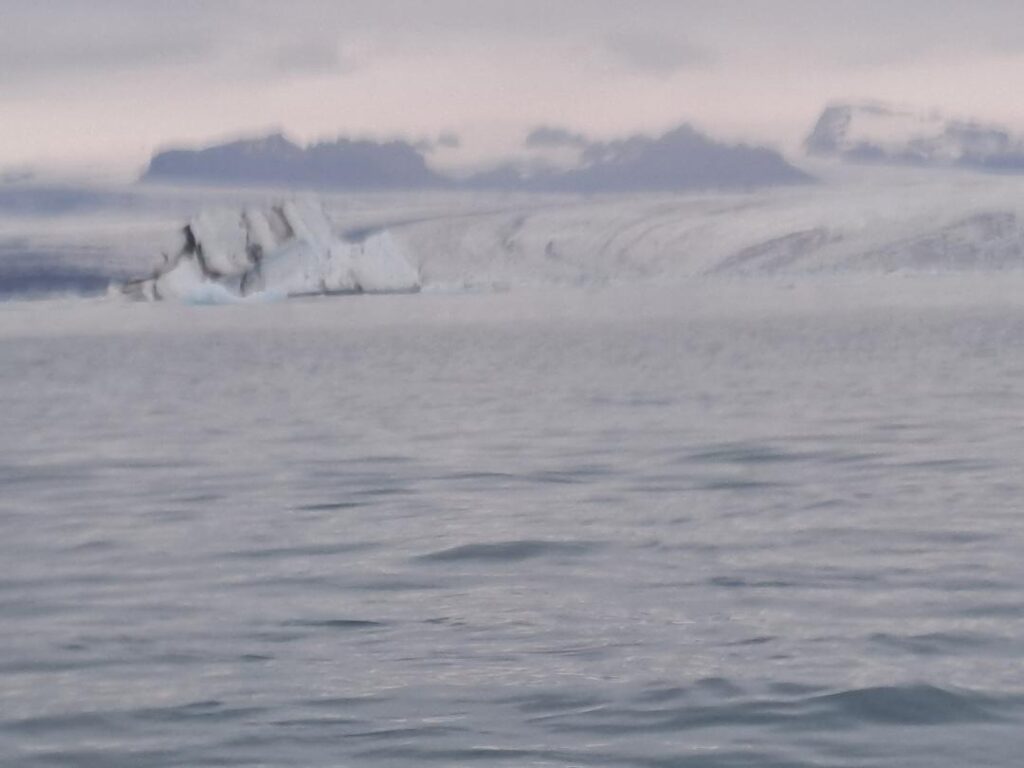

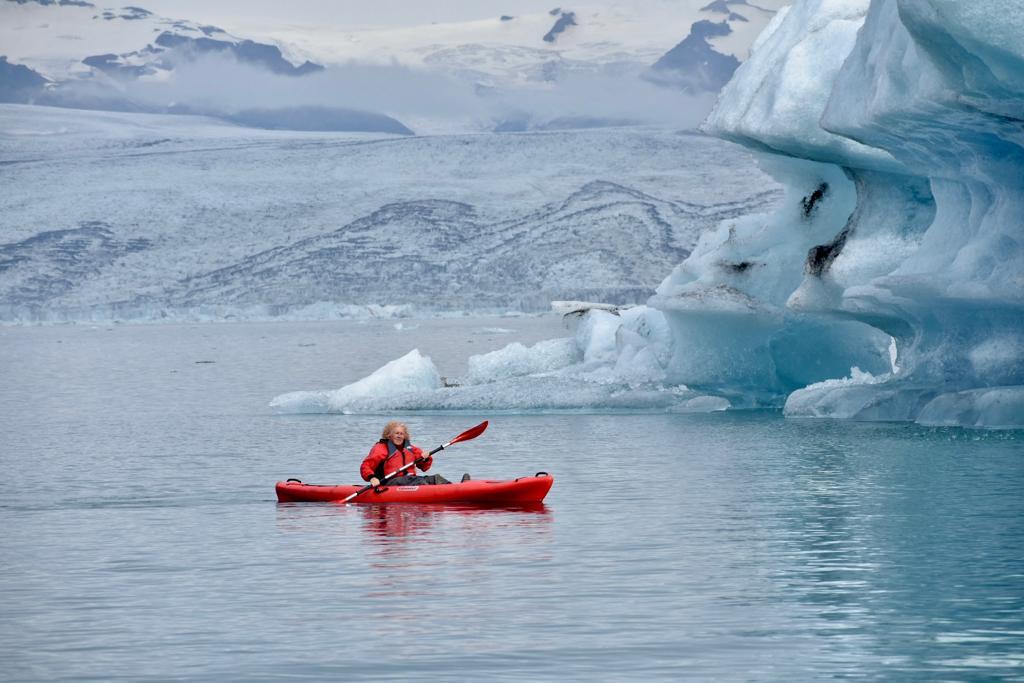
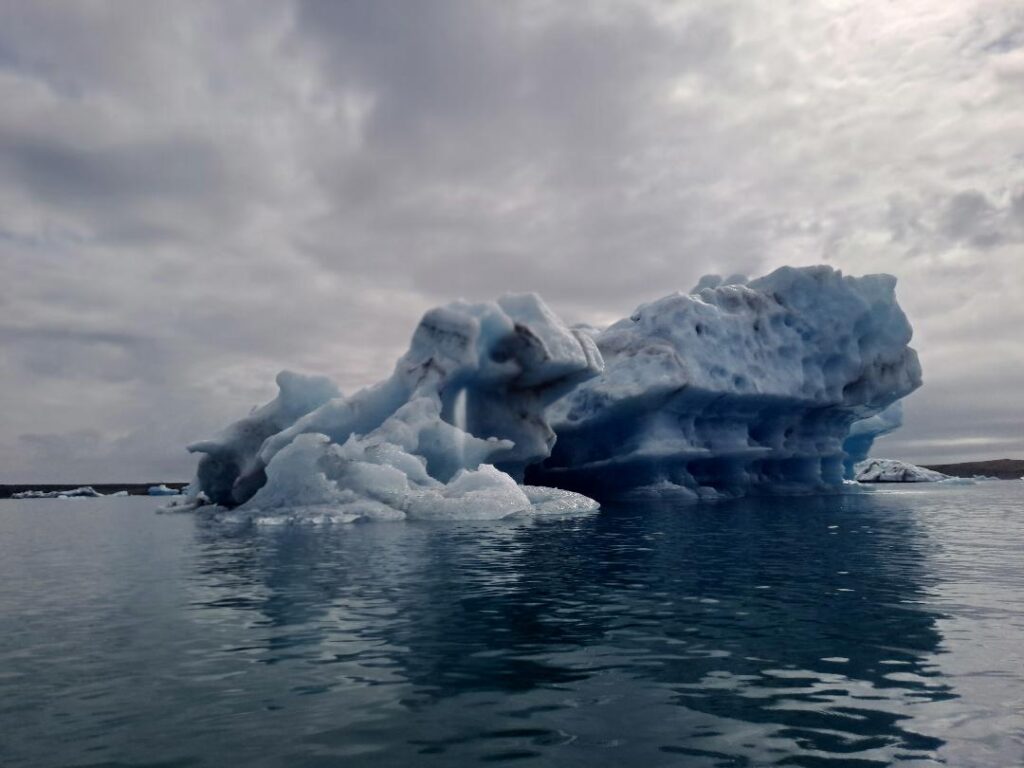

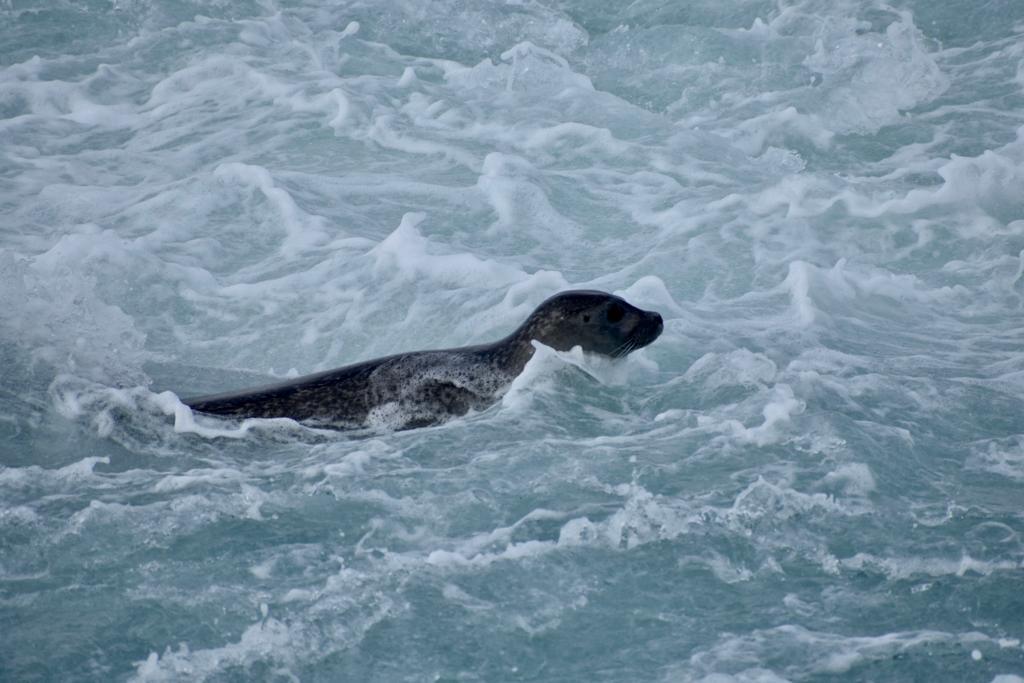
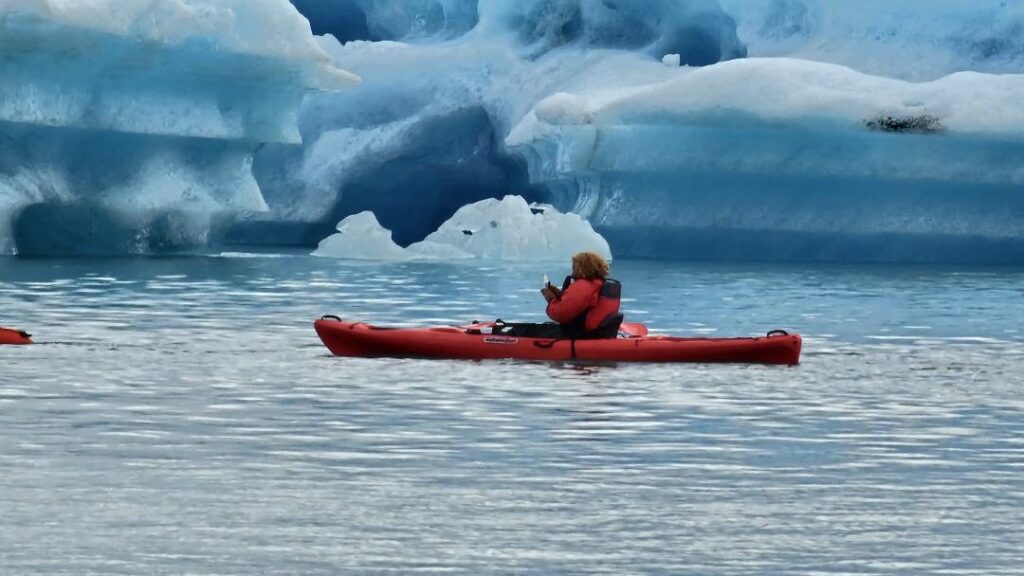
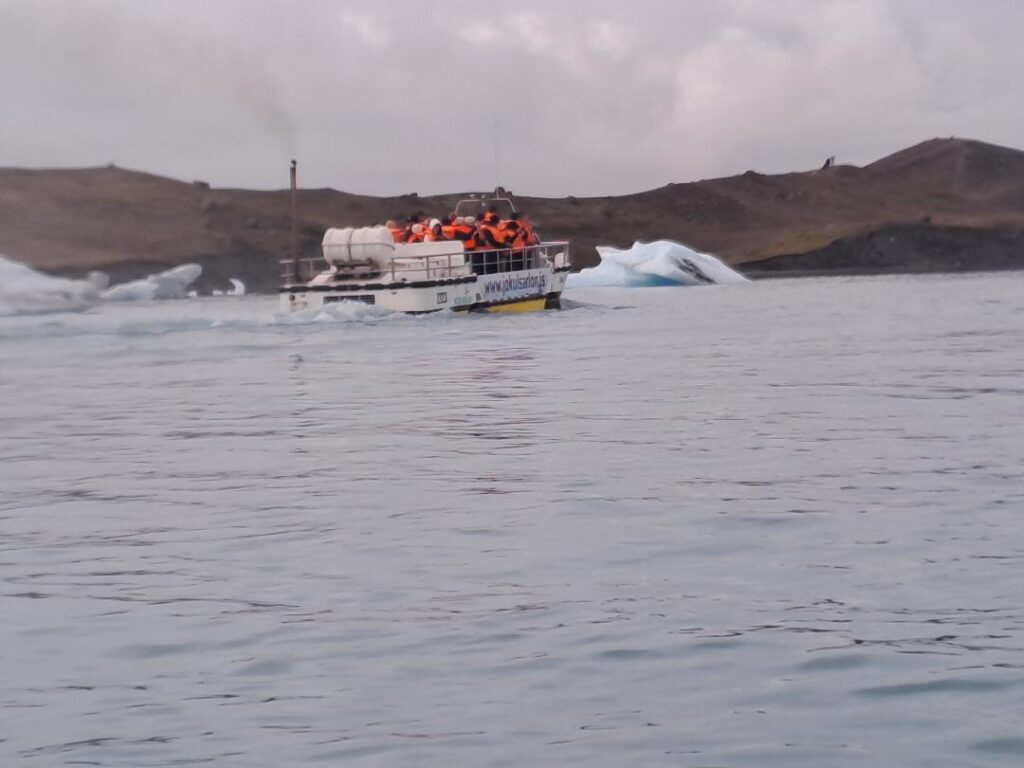

Jökulsárlón has not been around since Iceland’s settlement; it only formed around 1935. This was due to rapidly rising temperatures in the country from the turn of the twentieth century; since 1920, Breiðamerkurjökull has been shrinking at a dramatic rate, and the lagoon has begun to fill its space.
Today, the expansion of Jökulsárlón is accelerating. In 1975, it had less than half its current surface area.
In the relatively near future, it is expected that the lagoon will continue to grow until it becomes a large, deep fjord.
Though a dark omen for Iceland’s glaciers and ice caps in general, the retreat of Breiðamerkurjökull has resulted in an incredibly beautiful, if temporary, site. This has not been overlooked by Hollywood.
Our next visit was to Hofskirkja church, a beautiful turf church in the Öræfi region in South-East Iceland. There are only 6 turf churches remaining in Iceland and Hofskirkja is the last of the old churches to be built in this beautiful traditional turf style.
Its walls are made of rock and the roof is made of stone slabs, covered with turf.
There has been a church at Hof in Öræfi for 700 years and the first written records of a church being on this site are from a cartulary (an old medieval document) from 1343. The core of the current church was built in 1883-1885.
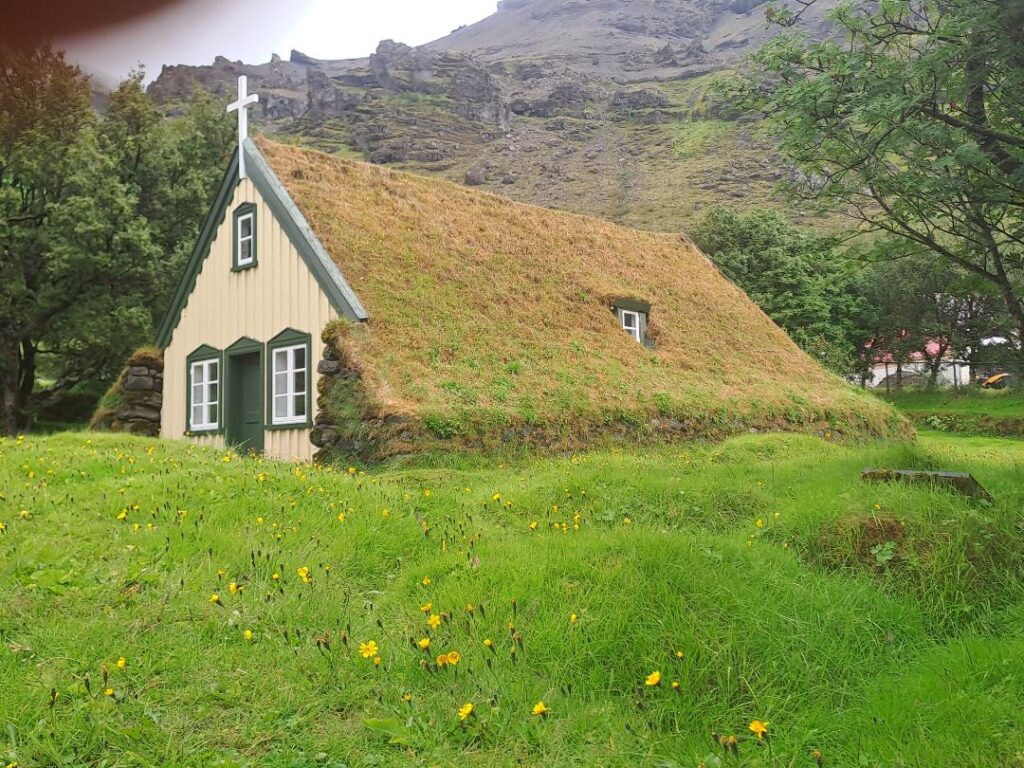
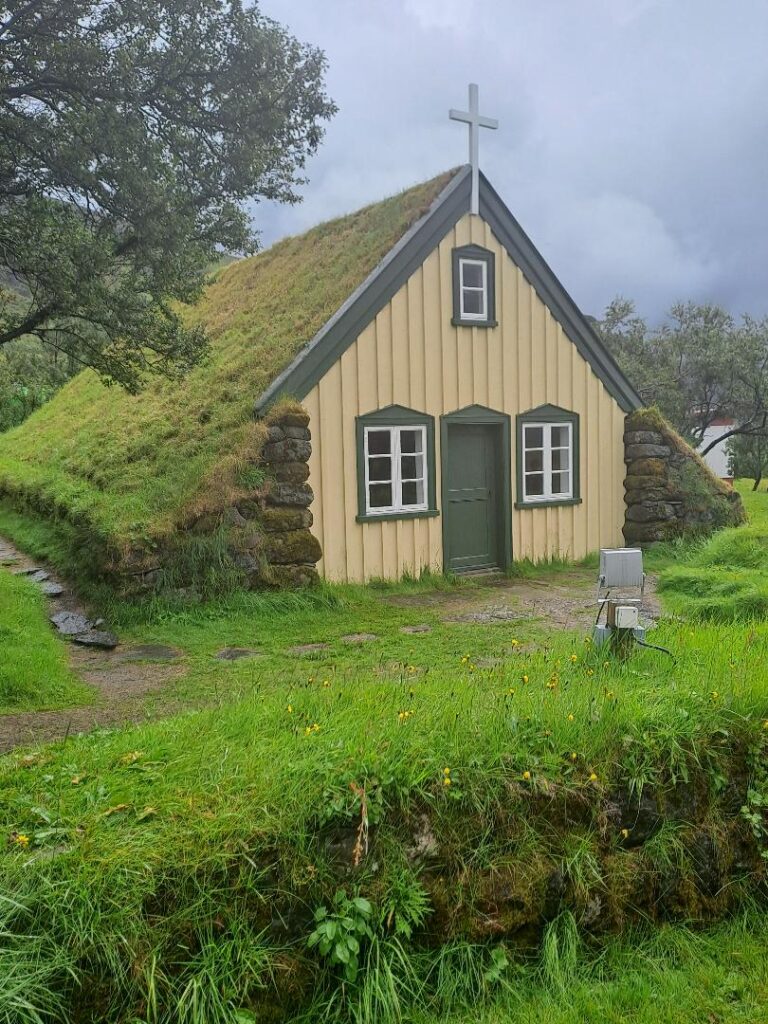
Our final destination for the day was Skaftafell. Thepark covers the glacier Skaftafellsjökull (an outlet glacier of the Vatnajökull ice cap), the mountain range Kristínartindar and the Morsárdalur valley. The Skaftafell geologic history is marked by eruptions and volcanic activity under the ice cap and glacial floods bringing forth silt and sand to the mighty and dangerous Skeiðarársandur south of the National Park. It is also marked by the calm climate conditions as the great ice cap protects the area against the harsh northern winds. Strangely enough, although surrounded by the glacier and ice, Skaftafaell has rather pleasant weather and more sunny days than elsewhere in South Iceland.
We certainly enjoyed a lovely sunny evening there. We had a fantastic view from our tent.
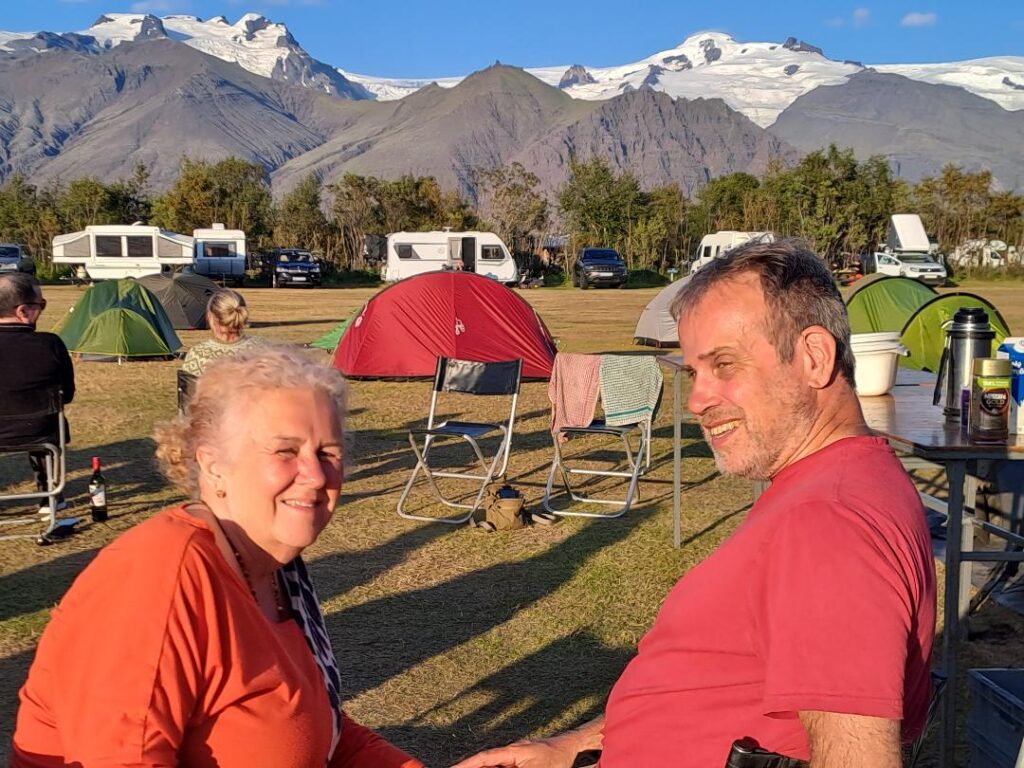
We had two nights here which was a real treat . We also lucked out that this was our cook night. Cook night means helping with the evening meal, breakfast the next morning and truck clean the next evening. Not only did we not have to stick our tent then next morning but we were told it would be a late start !!!!
Leave a Reply